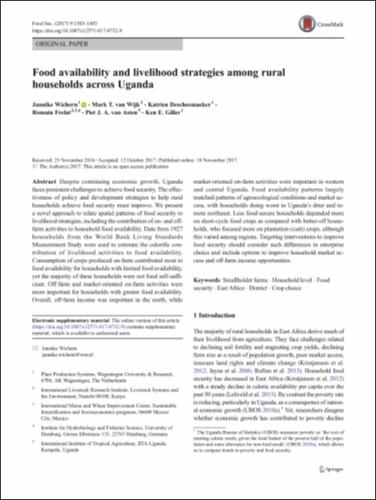Food availability and livelihood strategies among rural households across Uganda
Abstract
Despite continuing economic growth, Uganda faces persistent challenges to achieve food security. The effectiveness of policy and development strategies to help rural households achieve food security must improve. We present a novel approach to relate spatial patterns of food security to livelihood strategies, including the contribution of on- and off-farm activities to household food availability. Data from 1927 households from the World Bank Living Standards Measurement Study were used to estimate the calorific contribution of livelihood activities to food availability. Consumption of crops produced on-farm contributed most to food availability for households with limited food availability, yet the majority of these households were not food self-sufficient. Off-farm and market-oriented on-farm activities were more important for households with greater food availability. Overall, off-farm income was important in the north, while market-oriented on-farm activities were important in western and central Uganda. Food availability patterns largely matched patterns of agroecological conditions and market access, with households doing worst in Uganda’s drier and remote northeast. Less food-secure households depended more on short-cycle food crops as compared with better-off households, who focused more on plantation (cash) crops, although this varied among regions. Targeting interventions to improve food security should consider such differences in enterprise choice and include options to improve household market access and off-farm income opportunities.

